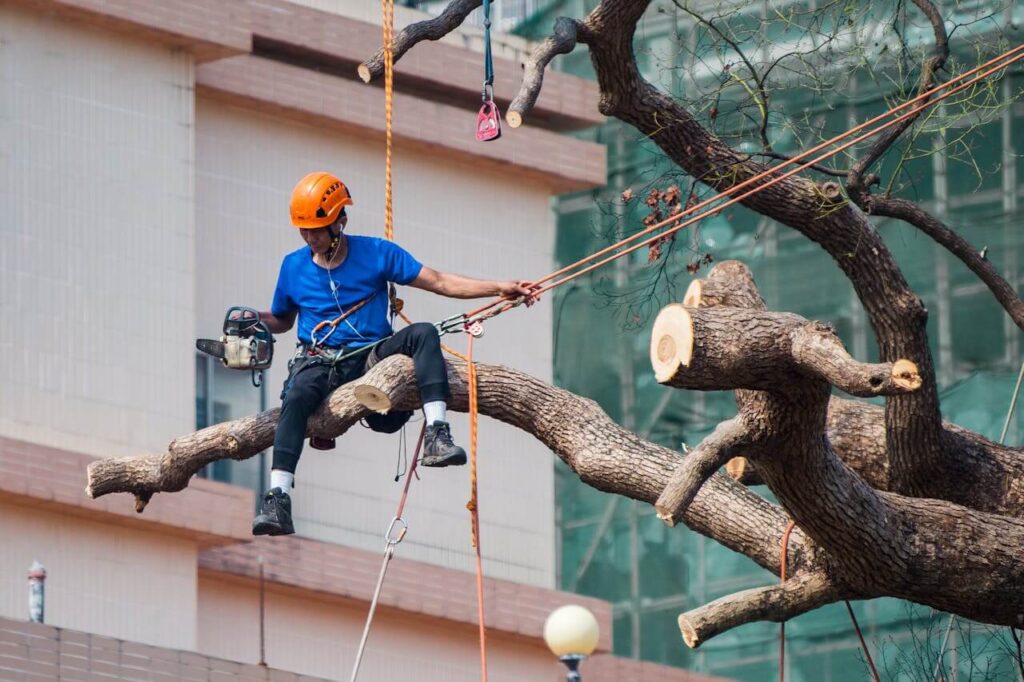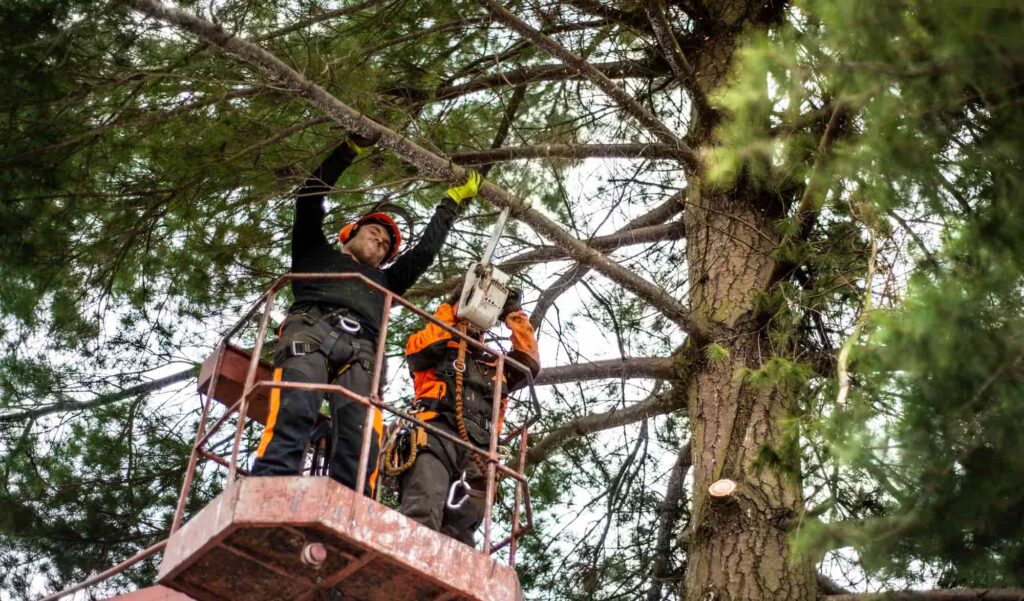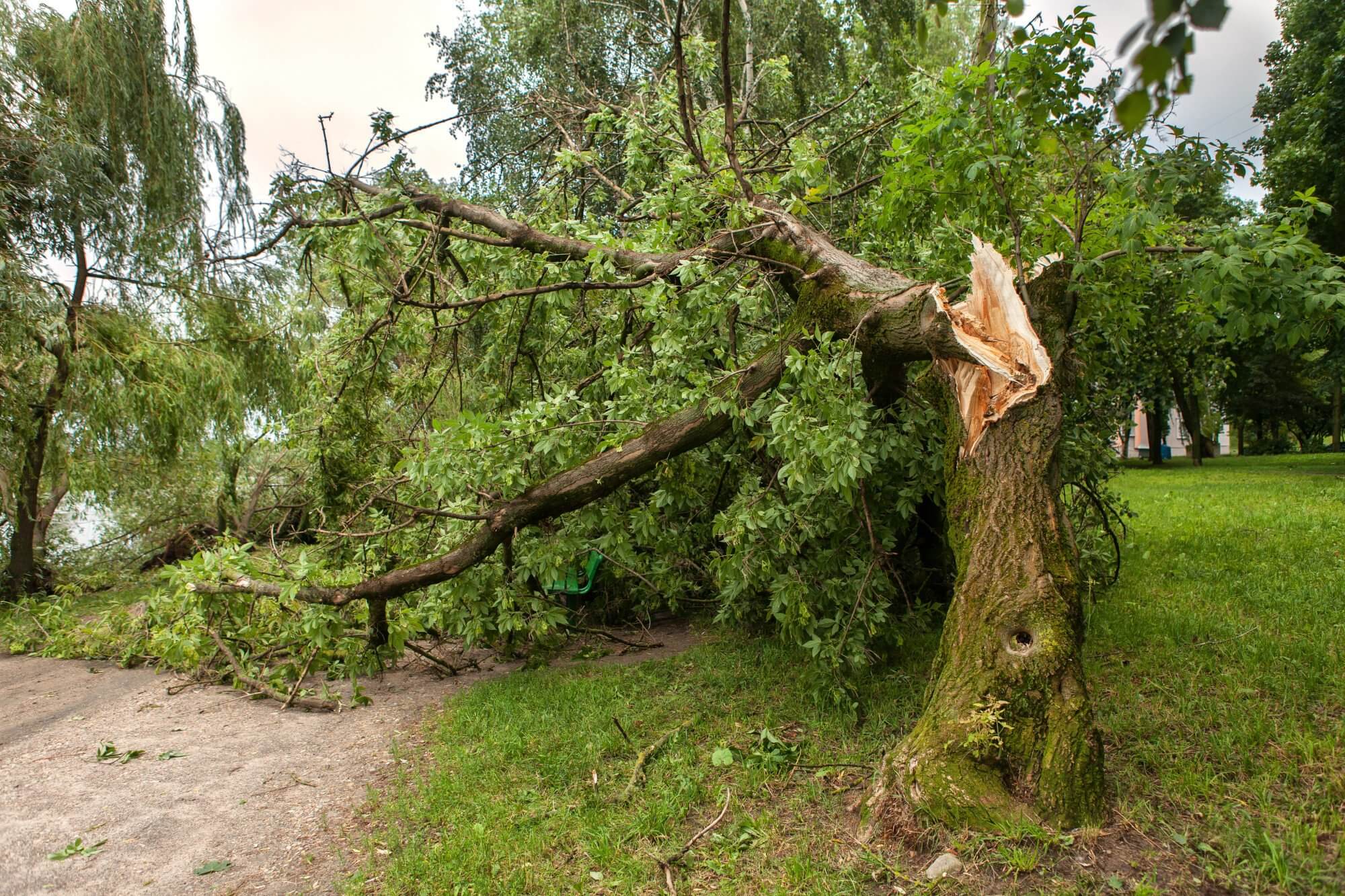Trees are essential to any property, offering shade, beauty, and environmental benefits. However, there comes a time when trees can pose a danger or become a hindrance. While it’s tempting to delay addressing tree problems, there are clear signs that indicate the need for professional tree removal.
This guide will help you identify those warning signs and explain when it’s time to contact a certified arborist or a reputable tree removal company. Taking timely action ensures safety, saves costs, and protects your property.
1. Visible Signs of Disease or Decay
One of the most obvious signs you need professional tree removal is visible disease or decay. While trees can be resilient, they are also susceptible to diseases and pests that can weaken them. In many cases, a tree may appear healthy on the outside while internal decay spreads undetected. To prevent a tree from becoming a hazard, it’s important to look out for:
Signs of Tree Disease:
- Discolored or wilting leaves: Yellowing leaves, premature leaf drop, or sparse foliage are early signs of disease.
- Fungal growth: Mushrooms or other fungi growing at the base of the tree may indicate internal rot.
- Cracked or peeling bark: This can reveal underlying problems in the tree’s structure.
If any of these symptoms are present, it’s best to consult an arborist. They will determine whether the tree can be saved or if removal is necessary. For severe cases, hiring a professional tree removal company is crucial to prevent further damage or accidents. Click here to get also about tree trimming costs.
2. Structural Instability or Leaning
While some trees naturally lean due to wind or their growth patterns, a sudden or increased lean can indicate root damage or instability. A tree that is leaning more than 15 degrees from vertical is a significant cause for concern. Here are a few things to watch for:
- Recent leaning: If the tree has developed a lean recently, especially after a storm or heavy winds, it may indicate that the roots are failing.
- Soil displacement: Cracked or lifted soil around the base of the tree suggests that the tree is losing its grip on the ground, making it more prone to falling.
- Cracks in the trunk: Large, vertical cracks in the trunk can compromise the tree’s structural integrity, making it unsafe.
A leaning tree, especially near buildings, power lines, or high-traffic areas, should be addressed immediately by contacting a tree removal company. Swift action reduces the risk of property damage and injury.
3. Dead or Hanging Branches
Dead or hanging branches pose a significant risk, especially in storm-prone areas. Dead branches are more likely to break off and cause injury or damage during high winds or heavy rain. Some warning signs to look for include:
- Brittle branches: These branches snap easily and are often dry and leafless.
- Hanging or broken limbs: Limbs that are hanging but haven’t fallen yet are a major hazard.
- Sparse or dead canopy: If the top of the tree is bare or showing signs of decay, it might be a sign that the tree is dying from the top down.
Removing dead or dying branches is essential for safety, but if the entire tree shows signs of significant decay, it’s time to call a professional tree removal company to assess whether complete tree removal is necessary.

4. Root Damage or Heaving
The health of a tree’s root system is crucial to its stability and longevity. Unfortunately, root damage can often go unnoticed until it’s too late. Several factors can cause root damage, including construction, poor soil conditions, or root diseases. Some signs of root problems include:
- Exposed or damaged roots: If the tree’s roots are exposed, particularly after heavy rains or flooding, the tree may become unstable.
- Soil heaving: Soil that has been pushed upwards around the tree’s base may signal root problems.
- Patches of dead grass or vegetation: These may indicate an issue with the tree’s root system and its ability to absorb water.
If you observe root damage or heaving around your trees, it’s important to get an expert opinion. A certified arborist can determine the extent of the damage and whether the tree needs removal. The risk of falling is much higher for trees with compromised roots, and a professional tree removal company can safely handle the job.
5. Trees in Hazardous Locations
Even healthy trees can become hazardous when located too close to buildings, power lines, or other structures. Over time, a tree’s branches can grow into electrical lines or become too close to your home, causing potential damage or fire hazards. Additionally, trees with invasive root systems can threaten the integrity of driveways, sidewalks, and foundations.
Situations That Call for Tree Removal:
- Proximity to power lines: Trees growing too close to power lines can cause outages or, in extreme cases, fires.
- Interference with structures: Trees that grow too close to homes, garages, or fences may cause damage to the structure or create an easy pathway for pests.
- Underground utilities: The roots of large trees can disrupt pipes, sewer lines, or drainage systems.
In these cases, removal may be the best solution. It is especially important to hire a professional tree removal company for trees in hazardous locations to ensure the process is completed safely and without damage to your property.

When to Call an Arborist for Assessment
In some situations, the need for tree removal is not immediately apparent. It’s often best to consult with a certified arborist who can assess the health of your trees. Arborists are trained to evaluate the condition of a tree and offer professional recommendations. They can tell you whether a tree needs to be pruned, treated, or removed altogether.
Some of the benefits of hiring an arborist include:
- Expert diagnosis: Arborists can identify diseases and pests that may not be obvious to homeowners.
- Safety: Arborists follow strict safety protocols to prevent accidents during tree removal.
- Long-term solutions: Instead of immediate removal, an arborist can suggest treatments or pruning to prolong the life of your trees.
The Importance of Professional Tree Removal Services
DIY tree removal may seem like a cost-saving solution, but it comes with significant risks. Without the proper equipment, knowledge, and safety measures, removing a tree can lead to accidents, property damage, and even injury. Professional tree removal services offer several advantages, including:
- Safe removal: Professionals are trained in using specialized equipment and techniques to remove trees safely.
- Efficient cleanup: After the tree is removed, tree removal companies will handle the disposal of debris, leaving your property clean and hazard-free.
- Preventing further damage: Removing a tree incorrectly can cause damage to surrounding property, underground utilities, or neighboring trees. Hiring a professional ensures the job is done right.
Conclusion: Protect Your Property with Professional Tree Care
Knowing when to remove a tree is key to maintaining a safe and beautiful landscape. Visible signs of disease, structural instability, root damage, and hazardous locations are all important indicators that professional tree removal may be necessary. Always consult with an arborist for a thorough assessment before making a decision, and rely on a qualified tree removal company to handle the process safely and efficiently.
By taking proactive steps and addressing potential hazards early, you can protect your property, enhance the health of your remaining trees, and avoid costly damage. Keep your landscape beautiful and safe by working with professionals who understand the complexities of tree care and removal.

